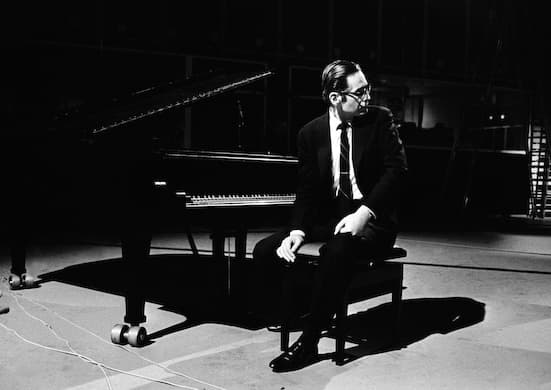Jazz Fans Will Never Tire of Receiving Bill Evans ‘Treasures’
It’s notable how the new material for the legendary pianist’s first track on this album, the music for the intro and the orchestration, supports and enhances what was already Evans’s best-known work.

Bill Evans
‘Treasures: Solo, Trio & Orchestra Recordings From Denmark (1965-1969)’
Elemental Records
We hear an exquisite string background, reminiscent of a late 19th century symphonic tone poem depicting a peaceful forest or a woodland scene. Mostly out of tempo, it’s lovely and though light in tone, by classical music standards at least, somewhat serious.
A few minutes in, we can make out the woodwinds vaguely sketching the contours of a familiar melody; then the piano enters, just in time to play half of a chorus. For about 40 seconds, we get the distinct mental image of a little girl scampering through the trees, and then, when she’s departed the scene, the strings come back in, as if playfully chasing after her.
This track is labeled “Intro / Waltz for Debby.” The “intro” is the new orchestral part that frames the jazz standard composed by the legendary pianist Bill Evans. In this case, it’s notable how the new material, the music for the intro and the orchestration for the entire track, supports and enhances what was already Evans’s best-known work, in ways that are both expected and otherwise.
This session with his trio, bassist Eddie Gomez and drummer Marty Morell, backed by a string orchestra arranged and conducted by the composer Palle Mikkelborg, was recorded at Copenhagen for Danish television in 1969. It’s merely the most remarkable part of a new package of previously unheard live performances now being released as both a two-CD and a three-LP set.
“Intro / Waltz for Debby” turns out to be a kind of an overture; a fuller version of the waltz occurs a few tracks later. This one, conversely, starts with the piano, as the pianist lays out his melody in as few notes as possible. The little girl is playing in her room and gradually the real-life settings of her house fade away, and as the horns come in around her, they symbolize the forest of her imagination. A few minutes in, she’s surrounded not merely by dolls and teddy bears (as depicted in Gene Lees’s vibrant lyric) but by friendly forest animals, or maybe even fairies and woodland sprites.
A few years earlier, Evans served a key role on Miles Davis’s breakthrough album, “Kind of Blue,” which, among other things, helped christen the birth of the modern “jazz waltz.” Still, “Waltz for Debby” isn’t to be compared to Davis’s “All Blues” — most so-called jazz waltzes of the period are in 6/8 or 6/4, but “Waltz for Debby” is an old-fashioned 3/4. The melody was inspired by Evans’s young niece, and he was deliberately using the same time signature employed by many a nursery rhyme or children’s song. Clearly, the time signature signifies the innocence of childhood.
Yet this second “Debby” is even more whimsical and capricious; this Debby doesn’t merely waltz, she whirls and cavorts through the trees and with the dancing bears in this nocturnal forest of her dreams. It ends gradually and quietly, with the other instruments receding until only the piano is heard, as if Debby is slowly falling asleep — or, perhaps, waking up from this dream.
There are six tracks and 28 minutes of Evans accompanied by Mr. Mikkelborg conducting the large ensemble, a combination of the Danish Radio Big Band and the Royal Danish Symphony Orchestra, and they are a high point of this new set. Another highlight is a lovely Mikkelborg original “Treasures,” in which he plays a harmon-muted trumpet solo in a way that anticipates “Aura,” the composer’s inspired 1985 collaboration with Miles Davis.
There are also six tracks of Evans playing live and solo, and copious amounts of the pianist working in his preferred format, the trio with bass and drums — including an entire album co-starring the Danish bass virtuoso Niels-Henning Ørsted Pedersen. The unaccompanied solos are swinging as well as introspective, and the trio numbers are introspective and personal as well as highly swinging.
“Treasures: Solo, Trio & Orchestra Recordings From Denmark (1965-1969)” is the 10th such release of previously unheard live recordings by the legendary pianist to be produced by Zev “The Jazz Detective” Feldman. It seems almost impossible to imagine that we’ll ever reach the point of saturation — not when the “new” music we are hearing for the first time is as good as this.

